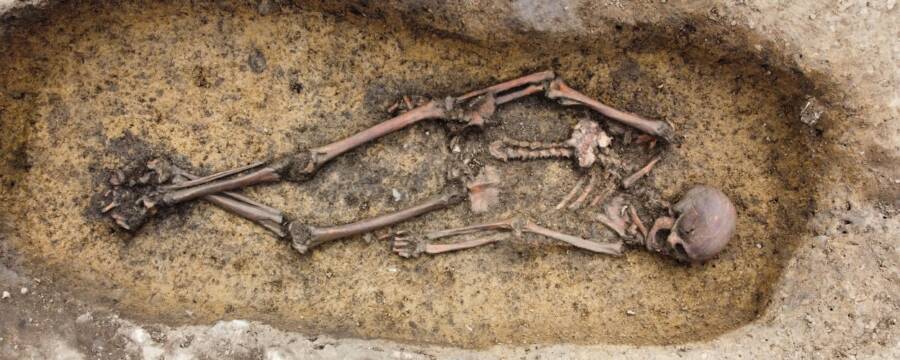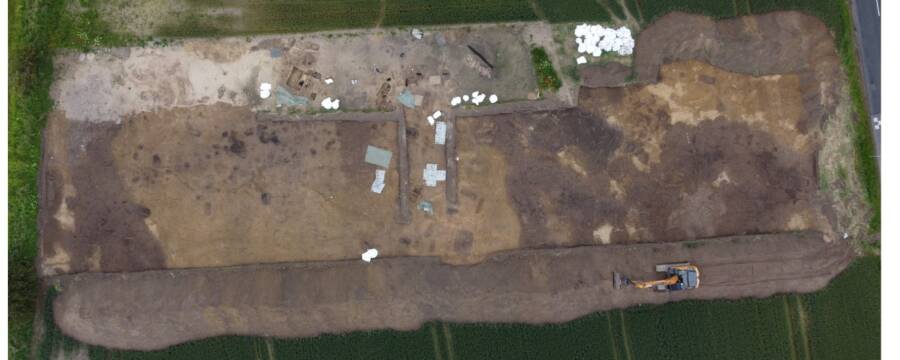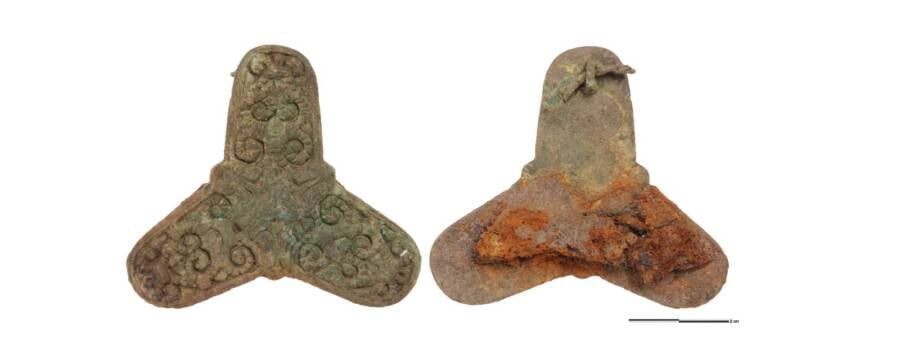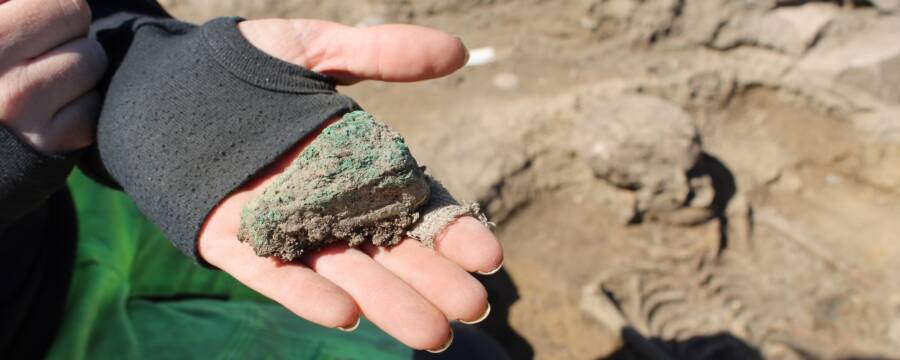The Viking skeletons were so well-preserved that researchers believe they will be able to conduct DNA analyses to learn more about them.

Museum OdenseA Viking skeleton found during the excavations in Åsum.
Over the past six months, archaeologists have unearthed more than 50 well-preserved Viking skeletons from graves found in Åsum, Denmark, near the city of Odense.
Now, analyses of these skeletons could help to provide new insights into the everyday lives of the Vikings.
More Than 50 Well-Preserved Viking Skeletons Found In Denmark
The excavation was carried out by archaeologists from the Museum Odense, who announced the discovery in a statement.
“It is truly unusual to find so many well-preserved skeletons at once, like those discovered in Åsum,” said archaeologist and museum curator Michael Borre Lundø. “This discovery offers extraordinary opportunities to perform a wide range of scientific analyses, which can reveal more about the general health, diet, and origins of those buried.

Museum OdenseThe Viking graveyard in Åsum.
Among the many questions Lundø hopes to answer is whether those buried at the site were related, an investigation which he declared is “particularly significant,” as no comparable research has ever been conducted in similar graves. As for the graves themselves, they were discovered in a roughly 20,000-square-foot burial ground used during the ninth and tenth centuries.
While some of the skeletons appear to have been buried in coffins, others were wrapped in cloth. Researchers also found a number of burnt bones that may have belonged either to enslaved people or animals who were sacrificed to be buried with their owners.
Based on initial findings, it’s clear that at least some of the deceased were of high status, given the grave goods found alongside them. In one particularly fine grave, a woman was buried in a Viking wagon.
“The woman was buried in the wagon she likely traveled in,” Lundø said. “We must imagine that she was buried with her finest clothes and belongings.”
Also found with her were a glass-beaded necklace, an iron key, a knife with a silver wire-wrapped handle, and a small shard of glass that researchers think may have functioned as an amulet. Additionally, there was a decorated wooden box at the foot of the wagon, the contents of which remain unknown for the time being.
Another grave was found to contain a three-lobed brooch made of bronze, a single red bead that was worn on a necklace, an iron knife, and a piece of rock crystal, which does not naturally occur in Denmark. Researchers suspect it was probably imported from Norway.

Museum OdenseThe three-lobed bronze brooch.
“Several items from the many graves in Åsum indicate that the buried Vikings were connected to international trade networks that developed during the Viking Age,” Lundø said.
But while the grave goods are fascinating, the most important component of the discovery is the state of the bodies, which will allow researchers to conduct new, detailed analyses.
The Bodies Are So Well-Preserved, Researchers May Be Able To Conduct DNA Analyses
“The graves in Åsum are so well-preserved that it may be possible, for the first time, to conduct special aDNA analyses on most of the skeletons — meaning DNA analyses on ancient material,” said Sarah Croix, associate professor in the Department of Archaeology and Heritage Studies at Aarhus University. “It will be incredibly exciting to learn where these people came from and whether the same families were buried here across multiple generations.”

Museum OdenseAnother grave good recovered during the Åsum excavation.
Moreover, the presence of these graves and the goods found within them show just how important the village of Åsum had been to the Vikings. According to Lundø, these findings illustrate that Åsum was a central settlement in the hinterlands of what is now Odense.
“It’s fascinating to imagine that the buried Vikings were undoubtedly aware of the nascent urban development that took place just five kilometers west of where they lived, then known as Odins Vi,” he said. “Their descendants witnessed the cementing of Odense as a town, while Harald Bluetooth constructed one of his ring forts — Nonnebakken — south of the river as part of his effort to unify the kingdom.”
After reading about these Viking graves, learn all about the surprising truth behind Viking helmets. Then, learn about the mighty Viking berserkers.





